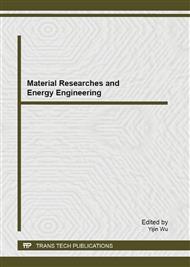p.519
p.524
p.530
p.536
p.543
p.549
p.556
p.560
p.566
Transient Fuel Injection Rate and Fuel Economy Prediction for a Vehicle Driven with FTP-75 Mode Using an ECU HILS
Abstract:
A fuel injection system which is operated with ECU HILS was used to evaluate the transient fuel injection rate and fuel economy. Several sensor signals from a car such as the engine speed, car speed, cam position, crank position, air mass flow, throttle position and several other sensor signals are measured and recorded as a data file with DAQ-system for a vehicle driven in FTP-75 mode in a chassis dynamometer. Electric signals that are equivalent to the sensor signals from the car are reconstructed from the recorded data file using DAQ boards and a computer. All the reconstructed sensor signals are provided to the ECU with synchronized timing. Injectors were connected to the ECU output pins and were driven by the system to measure the quantity of injected fuel. The ECU HILS show that the transient fuel injection rate and fuel economy for the car driving mode could be successfully predicted. Also, the repeatability of the generation of sensor signals can enhance the accuracy of a range of experiments related to cars fuel injection experiment.
Info:
Periodical:
Pages:
543-548
Citation:
Online since:
September 2013
Authors:
Price:
Сopyright:
© 2013 Trans Tech Publications Ltd. All Rights Reserved
Share:
Citation:


